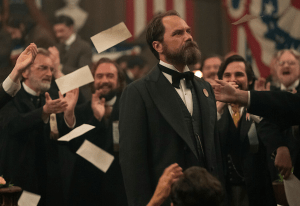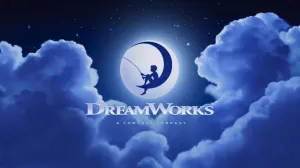Star Wars: The Last Jedi has finally arrived in theaters and, love it or hate it, the Rian Johnson-directed eighth installment of the Star Wars saga has left a mark that changes the universe forever.
Videos by ComicBook.com
Major spoilers ahead for Star Wars: The Last Jedi.
No matter your opinion of The Last Jedi, it would be pretty hard to argue that The Last Jedi is a boring movie. The film not only delivers action scenes, space battles, and the lightsabers that fans expect from a Star Wars film, but it also goes straight for the status quo of the franchise’s universe, introducing new characters, new worlds, unexpected reveals, and even new elements and layers to the Force and it’s those challenges and shakeups that make it impossible to go back.
One of the biggest ways that The Last Jedi changes Star Wars forever is how it redefines the Force, and that new look at one of the most critical elements of Star Wars happens early on in the film. Even people who have never seen Star Wars has some idea about what the Force is and what it does — Darth Vader’s Force choking people is almost cultural currency at this point. But even long-time fans were stunned to see new uses of the Force. The first big show of these previously unexplored powers comes from General Leia (Carrie Fisher.) After TIE fighters blasted the bridge of the Resistance’s ship, Leia was hurtled into space, making it look like we would be saying goodbye to the beloved character before we’d made a dent in our popcorn. Instead, Leia opens her eyes and uses the Force to pull herself back into the ship. While fans have long known that Leia was Force sensitive — Luke (Mark Hamill) even suggested it in Return of the Jedi — but The Last Jedi is the first time she’s tapped into it on screen, which is particularly interesting as it may well be the first time Leia has done it at all.
But Leia’s epic Force moment wasn’t the only major new display of the mightiness of the Force. While Force projection has always been possible, Luke takes it to an unimaginable level when he projects himself literally across space for an extended period of time, tricking Kylo Ren (Adam Driver) into believing he was truly there. Luke is even able to make his Force projection tangible, handing Leia Han’s gold dice which were also a Force projection. And of course, we can’t forget Yoda’s Force Ghost that actually called down lightning to destroy the sanctuary holding the Jedi texts. These new displays of the power of the Force unlock limitless potential for what fans might see going forward in the Star Wars universe. Luke’s explanation of the Force to Rey (Daisy Ridley) is also more expansive than what we’ve heard previously.
Another major way that The Last Jedi changes Star Wars is that it lets the past die, both literally and figuratively. Yes, that’s exactly what Kylo Ren has been asking for since trailers for the films, but it turns out that it’s pretty solid advice. The Last Jedi serves, in a sense, as the end of the Skywalker story. Yes, Kylo is a Skywalker and Leia technically didn’t go anywhere, but Star Wars has never actually been about Kylo or Leia. Instead, it’s largely been the story of Luke and his story resolves at the end of The Last Jedi when, after besting Kylo so that what remains of the resistance can escape, fans see the Jedi Master become one with the Force. And who rises to take his place in the eternal struggle for balance between the Dark and the Light? Rey, the daughter of nobodies. She’s not a Skywalker, not born into legend with a predestined place in the conflict. Instead, she’s an everywoman stepping up to fight for what she believes in. With the future of the Star Wars universe now resting with her and Kylo, it’s clear that we are moving forward into a galaxy where anyone can be a hero — even one where the legends of previous heroes loom large.
There’s also a matter of diversity in The Last Jedi that sets Star Wars on a whole new course — and we don’t just mean diversity in regard to race, gender, or species (though we will get to some of that in a bit.) There’s also a diversity of action and choice in the film, with the good guys making pretty big mistakes, something that we don’t always seen in Star Wars films. Poe (Oscar Isaac,) for example, disregards orders more than a few times without stopping to think that there could be a larger play involved. And his plans, which rope in Finn (John Boyega) and Rose (Kelly Marie Tran,) largely backfire. But there’s also diversity in the more standard sense. The Last Jedi marks the first time an Asian-American woman (Tran) had a leading role in a Star Wars film, while women overall have a much larger role in The Last Jedi. The Resistance is led by Leia, but when she is out of commission it’s another woman, Amilyn Holdo (Laura Dern) who leads in her stead. Rey rises as the future of the Light side, and even in the opening moments of the film it’s a female character whose actions have a huge impact on the trajectory of the story. It’s Rose’s sister who sacrifices herself in order to drop the bombs which destroy the First Order’s dreadnaught, not Poe sweeping in to save the day.
Star Wars: The Last Jedi is in theaters now.








